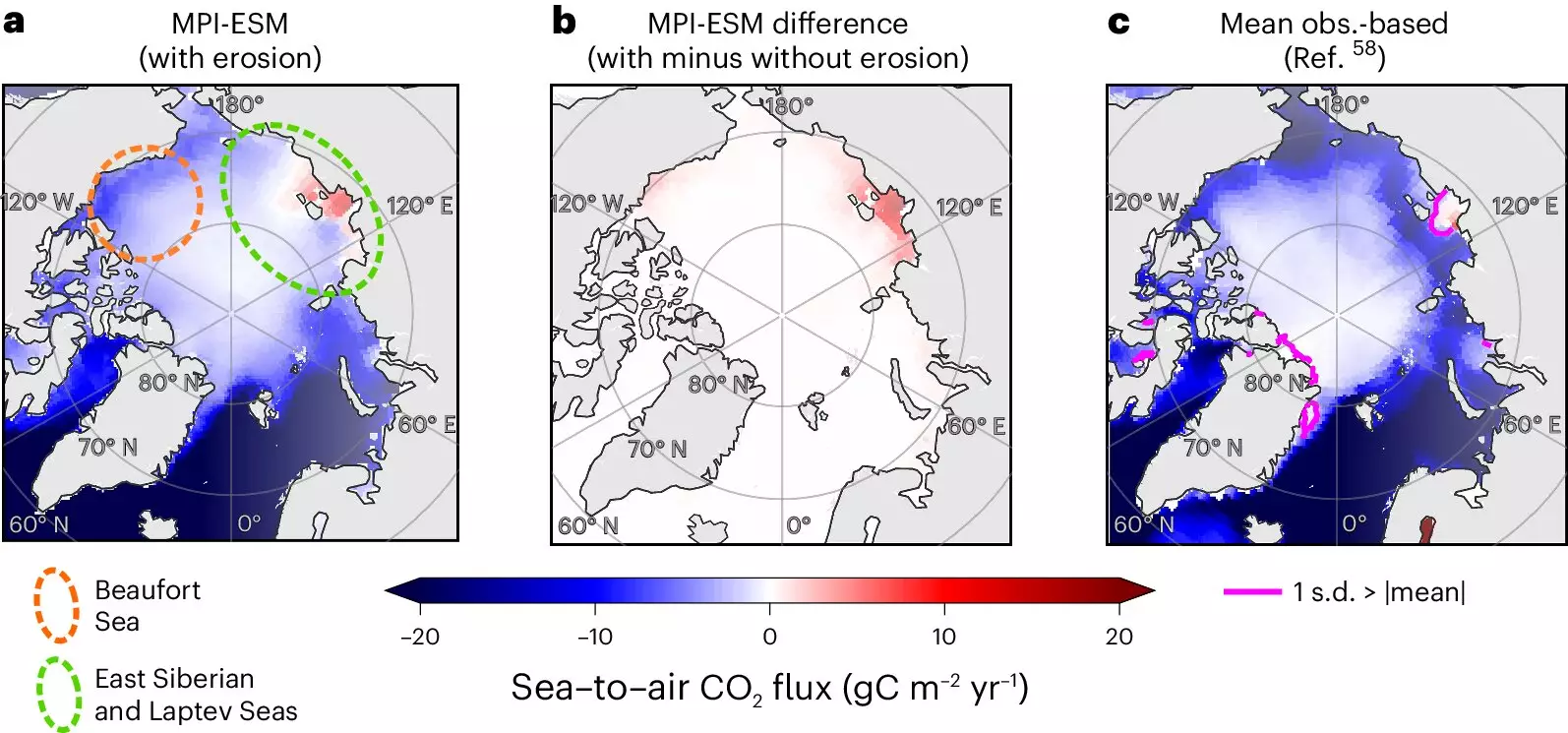The Arctic Ocean has long been recognized as a vital carbon sink, crucial for mitigating climate change by absorbing carbon dioxide (CO2) from the atmosphere. However, recent research indicates that this natural mechanism is under threat due to the dual forces of climate change and coastal erosion. According to a groundbreaking study featured in the journal Nature Climate Change, melting permafrost and intensified coastal erosion are impairing the Arctic’s capacity to sequester CO2. Researchers warn that if the current trend continues, the Arctic Ocean could become a net source of atmospheric carbon, thus exacerbating global warming.
This research provides alarming projections: by 2100, emissions resulting from eroded permafrost may increase atmospheric CO2 levels to the equivalent of 10% of total European car emissions recorded in 2021. The significance of these findings cannot be overstated. It suggests a fundamental shift in the Arctic Ocean’s ecological role, moving from a carbon sink to potentially contributing to the carbon surplus in the atmosphere.
Permafrost, defined as soil that remains frozen for extended periods, is present in large quantities across the Arctic. Historically, this frozen ground has served as a major carbon reservoir, containing approximately 2.5 times more carbon than the entire atmosphere combined. However, human-induced climate change is causing permafrost to thaw at an accelerated pace, which disrupts this balance. As summer temperatures rise, the ground remains unfrozen for longer periods, exposing it to natural elements like waves and storms. This exposure leads to increased coastal erosion, where substantial amounts of carbon-rich soil are washed into the ocean.
The research indicates that the loss of permafrost could diminish the Arctic Ocean’s CO2 absorption capability by over 14 million tons annually by the end of the century. To put this in perspective, this quantity is akin to the annual emissions produced by thousands of passenger vehicles, highlighting the dire implications for atmospheric carbon levels. The erosion is not merely a physical process; it has profound ecological consequences. Coastal ecosystems are already feeling the impact of these changes, leading to ocean acidification and affecting the communities reliant on these environments for their livelihoods.
The acceleration of erosion poses not only environmental threats but also social ramifications, particularly for indigenous and coastal communities. Places like Shishmaref in Alaska face the possibility of relocation as traditional habitats become increasingly uninhabitable. The loss of heritage sites and archaeological resources further complicates the issue, depriving communities of their cultural identity in the face of climate-induced changes.
The situation is critical; the projected increase in permafrost erosion hotspots, such as Drew Point in Alaska and the Mackenzie River Delta in Canada, underscores the urgent need for adaptive strategies. These regions are witnessing pronounced environmental changes, which threaten both local ecosystems and human populations.
The implications of this research extend beyond the Arctic itself; it serves as a stark reminder of the interconnectedness of climate systems. Climate scientists emphasize that while the contributions from eroding permafrost may seem minor—accounting for approximately 0.1% of total human emissions—every bit counts in terms of our planet’s fragile balance. As atmospheric CO2 levels rise, we enter a feedback loop where increased emissions lead to further warming, which in turn causes more permafrost thawing.
Despite the urgency of the situation, the research also highlights the necessity for more comprehensive studies to fully grasp the complexities involved. The transition from carbon sink to carbon source is not firmly established, and many variables remain to be assessed. This uncertainty reinforces the need for continued research funding and policy initiatives aimed at mitigating fossil fuel consumption and protecting these vulnerable regions.
The Arctic Ocean’s capacity for carbon absorption is rapidly diminishing, leading to a host of climate ramifications both locally and globally. The intersection of permafrost erosion, rising temperatures, and socio-economic impacts creates a multifaceted crisis that requires immediate attention. As the world grapples with the realities of climate change, it becomes increasingly important to understand and address these intricate dynamics. Continued research and proactive measures are essential for safeguarding not only our environment but also the communities that depend on it. Only through concerted global efforts can we hope to reverse or mitigate the concerning trends highlighted in this pivotal research.


Leave a Reply